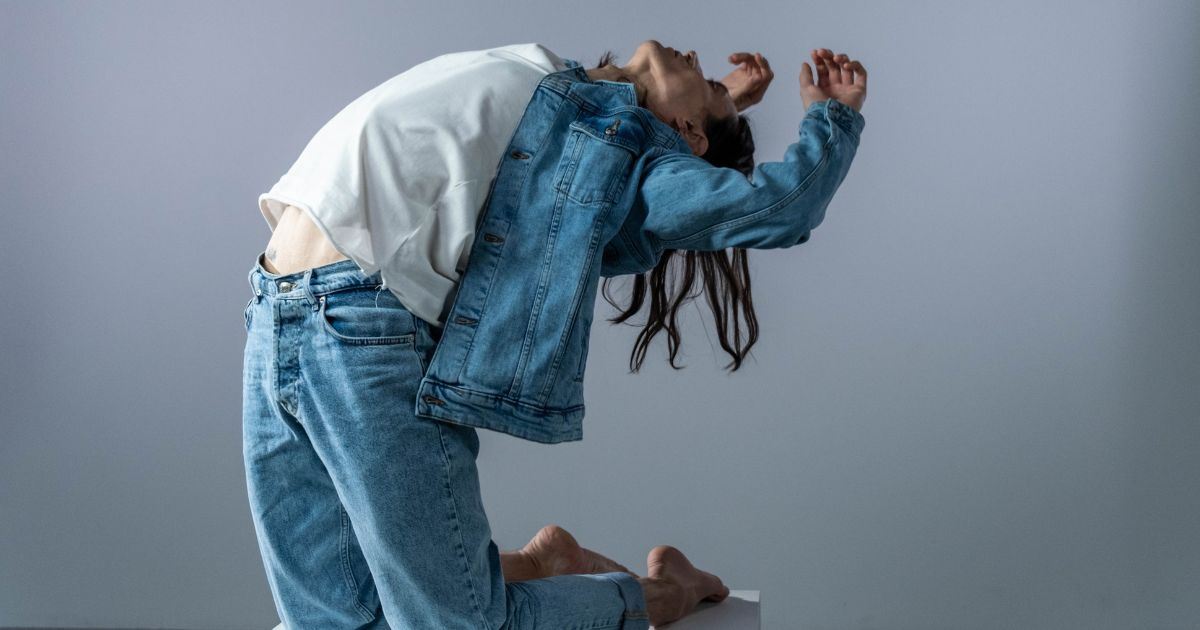You’re Not Meant to Carry Everyone’s Pain
Emotional boundaries. Do you find yourself absorbing others’ emotional distress as if it were your own? Perhaps you feel physically affected by the suffering around you—experiencing tension, heaviness, or even symptoms that mirror what others are going through. Maybe you notice yourself carrying others’ emotional burdens long after interactions end, or feel a sense of responsibility to help everyone experiencing difficulty regardless of your actual capacity or role in their lives. If the boundary between others’ pain and your own experience feels permeable or even non-existent, you’re encountering a specific empathic pattern that, while reflecting genuine compassion, may be creating unsustainable emotional costs that ultimately serve neither your wellbeing nor your ability to offer genuine support where truly appropriate.
This absorption pattern rarely indicates simple over-sensitivity or emotional weakness. It typically reflects a combination of innate empathic capacity and learned response patterns where emotional boundaries became compromised through specific experiences. Perhaps you grew up in an environment where others’ feelings were your responsibility—taking care of parents’ emotional needs or managing siblings’ distress in ways that exceeded your developmental capacity. Maybe you observed important others modeling pain-carrying as the definition of care, creating unconscious templates where absorbing suffering appeared to be the only legitimate way to show genuine concern. Or perhaps your natural empathic abilities developed without adequate guidance about appropriate boundaries, leaving these gifts without the essential container that allows them to function as strengths rather than vulnerabilities.

Your body reveals this absorption through specific physiological signatures. You might notice characteristic tension patterns when exposed to others’ suffering—muscles bracing in ways that mirror the physical manifestation of the distress you’re witnessing. Your breathing likely demonstrates noticeable changes during and after encounters with others’ pain—perhaps becoming shallow, restricted, or synchronized with the breathing patterns of the distressed person. You may experience direct somatic responses to emotional absorption—headaches, digestive disruption, sleep disturbance, or other physical manifestations that directly correlate with exposure to others’ suffering. These bodily responses aren’t random but reflect how deeply the emotional absorption has become embodied, creating physical experiences that directly reflect the pain you’re carrying for others.
The most painful irony of this pattern lies in how it ultimately undermines the very care it attempts to express. When empathy transforms from conscious compassion into unconscious absorption, several counterproductive outcomes typically emerge: your own wellbeing becomes compromised through
accumulated emotional burden, the quality of support you offer diminishes as your resources deplete, and most significantly, other individuals’ opportunities for developing their own capacity for emotional processing may become limited by your unconscious tendency to carry what might better be processed within their own systems. This creates situations where greater emotional burden produces less effective support—a losing proposition for everyone involved despite the genuine care at its foundation.
What makes this pattern particularly difficult to recognize as potentially problematic is how consistently our culture conflates pain-carrying with genuine compassion. We often praise those who “feel others’ pain deeply,” frame emotional absorption as evidence of extraordinary empathy, and generally reinforce the message that proper caring involves taking on others’ suffering rather than maintaining appropriate boundaries while offering genuine support. This validation obscures the crucial distinction between compassionate presence and emotional merging, making it challenging to recognize when empathy has crossed from sustainable support into unsustainable absorption.
How To love yourself
Healing Exercise #1: The Empathic Boundary Visualization
Begin developing clearer emotional boundaries through intentional practice: Set aside 5-10 minutes daily for this visualization. Close your eyes and imagine yourself surrounded by a permeable but distinct boundary—perhaps visualized as light, energy, or a transparent membrane. See this boundary as allowing compassion and understanding to flow outward while preventing others’ emotional states from automatically transferring into your system. Imagine witnessing someone in distress while maintaining this boundary—feeling genuine care and offering support without absorbing their emotional experience as your own. Practice this visualization especially before interactions where emotional absorption typically occurs, gradually building new neural pathways for empathy with appropriate boundaries.
Healing Exercise #2: The Emotional Ownership Discrimination
Many empathic absorbers benefit from developing greater clarity about emotional origin—whose feelings belong to whom. Strengthen this discernment through regular practice: When you notice yourself experiencing strong emotions, especially following contact with others’ suffering, pause and try this brief inquiry: Place one hand on your heart and ask, “Is this feeling primarily mine, someone else’s, or a combination?” Notice your first internal response without judgment. Then explore further: “When did this emotion begin? Did it arise from my direct experience or after witnessing another’s distress? Does its intensity match my actual situation?” This practice helps develop clearer discrimination between your authentic emotions and absorbed feelings, creating essential foundation for appropriate empathic boundaries.
Healing Exercise #3: The Compassionate Witnessing Practice
Healing empathic absorption involves developing alternative ways of showing care beyond emotional merging. Develop this capacity through intentional practice: The next time someone shares their distress, experiment with a different approach than your habitual response. Instead of automatically taking on
their feelings, practice compassionate witnessing—maintaining your distinct emotional center while offering full attention, validation, and care. Notice the impulse to merge or absorb, and gently redirect toward witnessing while silently reminding yourself: “I can care deeply without carrying their pain. My separate presence may offer more genuine support than emotional absorption.” This practice helps develop new templates for compassion that don’t require boundary violation to demonstrate genuine care.
Healing empathic absorption involves understanding the fundamental difference between empathy and emotional merging. Genuine empathy involves recognizing and caring about others’ experiences while maintaining appropriate awareness of the distinction between their reality and your own. Empathic absorption, by contrast, involves unconsciously taking on others’ emotional states as if they were yours, losing the boundary that allows for compassionate support without personal depletion. This crucial distinction helps transform your natural empathic gifts from potential vulnerabilities into genuine strengths, allowing you to offer sustainable support rather than accumulating unsustainable emotional burden.
Your physical practices significantly impact empathic regulation. Many people with strong absorption tendencies benefit from specific somatic approaches that help maintain clearer energetic and emotional boundaries. Practices that strengthen your connection to your own physical center—perhaps grounding exercises that emphasize feeling your feet and lower body, breathing patterns that maintain your own respiratory rhythm regardless of others’ emotional states, or movement that helps you feel the distinct boundaries of your physical form—help create embodied experience of appropriate separation that supports rather than undermines genuine empathic connection. As your body experiences clearer boundaries, your emotional patterns naturally begin to reflect this same appropriate differentiation.
The roles you assume in relationships deserve particular attention in this healing process. Many empathic absorbers unconsciously adopt helper, healer, or emotional container positions across multiple relationships—becoming the designated processor of others’ emotional material regardless of whether these roles are appropriate, sustainable, or truly beneficial for either party. Consider whether your relationship patterns reflect conscious choice or unconscious habit, and experiment with allowing greater balance in emotional processing responsibilities rather than automatically assuming the pain-carrying position. This intentional role examination helps transform unconscious absorption patterns into conscious choices about where, when, and how your empathic gifts are most appropriately shared.
Remember that healing empathic absorption doesn’t mean becoming cold, distant, or uncaring. The goal isn’t to eliminate your natural compassion but to transform it from unconscious merging to conscious connection—developing the capacity to care deeply while maintaining the boundaries that make that care sustainable and truly effective. As you practice this more boundaried empathy, you may discover that your support actually becomes more helpful precisely because it comes from grounded presence
rather than absorption, offering others the gift of compassionate witnessing rather than the ultimately limited support that emerges from carrying what isn’t yours to bear.

Keywords: Emotional boundaries, Anxiety, polyvagal theory, gestalt therapy, psychotherapy, parents, parental trauma, somatic experiencing, Licensed therapist near me in Manhattan NYC, Affordable therapy services in New York State, Holistic psychotherapy sessions in NYC, Somatic Experiencing therapy for trauma recovery in New York City, NARM therapy in Brooklyn, Licensed couples therapy in Manhattan, Gestalt therapy near me in NYC, Marriage counseling in Queens NYC, Therapy for anxiety treatment in NYC, Experienced psychotherapist in New York, Licensed psychotherapist near me in NYC, Somatic Experiencing therapy sessions in New York, Trauma therapy and counseling in Manhattan, Gestalt therapy sessions in New York City, Therapy sessions for emotional regulation in New York, Trauma therapy near me in Brooklyn New York, Licensed mental health therapist in Manhattan NYC, Depression therapy in New York, New York City therapist experienced in PTSD treatment
Contact us: Feel and Heal Therapy Office
For companies: Creative Manager
Microdosing and breaks/detoxification








